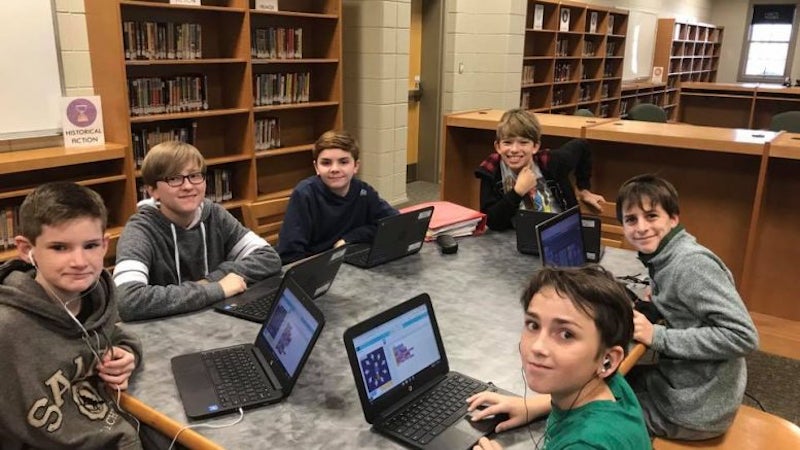Shelby County Schools awarded $25,000 grant for middle school technology initiative
Published 12:19 pm Wednesday, December 19, 2018

- Middle School students like these from Helena Middle School will soon have even more opportunities to learn about computer programming thanks to a new $25,000 grant from the Alabama Department of Education. (Contributed)
FROM STAFF REPORTS
COLUMBIANA – The Shelby County School District is one of 25 districts in the state to receive a $25,000 competitive grant from the Alabama Department of Education. The funds were awarded through the 2019 Alabama Middle School Computer Programming Initiative competitive grants process.
According to the Alabama State Department of Education, the purpose of the grants is to provide funding for professional development, training and curriculum to local school districts in the area of computer programming for middle school students.
“In today’s world, it is essential that students develop the skills that will be required for the workforce both now and in the future. With computer science occupations being among the top six jobs in Alabama, our students need to be exposed to these skills early in order to determine their interest level,” Technology Coordinator Lauren Woolley said.
Woolley said a small population of these students will go on to computer science careers, however, to thrive in the 21st century, workers need more than traditional academic knowledge. Students participating in these projects will also learn skills such as problem-solving, reasoning and teamwork which are developed through these learning experiences as well as develop a mindset which will help students succeed throughout their education and careers of their choice.
Shelby County Schools will use the grant funds to provide ongoing programming and lesson planning professional development for the middle school teachers, as well as provide the needed equipment for STEM Academy.
Before students are introduced to coding and computer science, teachers will participate in various professional development activities and strategies. Using a variety of face to face, online and video connections, the teachers will be trained in the use of the different equipment, how to present the activities to their students in sequential order, and how to integrate it with their curriculum standards.
Through previous professional development projects, this district has learned the benefits that long-term sustained professional development yields for our teachers, Woolley noted. The teachers will have three days of professional development training throughout the year where they will collaborate to develop lessons and activities to take back to their school and implement with their students. The teachers will receive instruction in a building block format by introducing basic activities which will build upon themselves throughout the sustained professional development.
Shelby County students will be exposed to real-world tasks and challenges that are designed to generate curiosity and excitement for problem-solving, programming and robotics. Students will have multiple opportunities during the year to create, build and code using devices such as Ozobots, Microbits and other programmable devices.
Because these types of classroom activities do not happen intrinsically, teachers need opportunities to learn to incorporate these activities seamlessly into their curriculum since the majority of teachers have never received any type of formal or informal training on coding and how it relates to their curriculum. The professional development portion of this grant will help the teachers reach a comfort level toward developing lessons and allowing their students to create.
All seven middle schools in this district will be included in the project. This district will develop a STEM Academy where up to 25 middle school teachers will be invited to apply. Local funds will also be used to expand the opportunity to high school teachers in order to begin the transition of coding activities into the high school curriculum and provide some vertical teaming opportunities.
Woolley noted that the grant project will also tie into the district’s current focus on Social Emotional Learning (SEL).
“Educational technology holds enormous promise to help foster social and emotional skills,” Woolley said. “It can personalize learning, engage the disengaged, promote collaboration, complement face-to-face learning, extend education outside the training room and provide access to learners anytime, anywhere which are some of the skills developed through social and emotional learning.”









